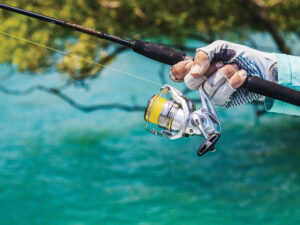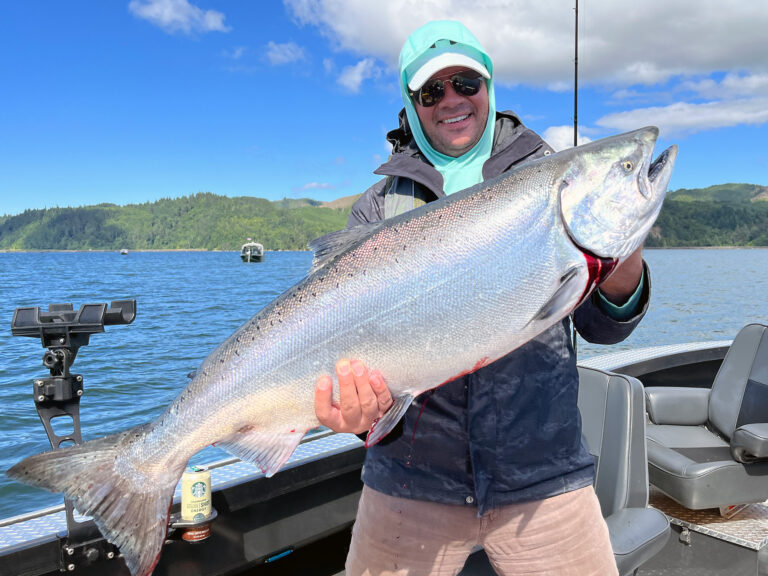What is a jerkbait (also known as a twitchbait)? That’s not a term you’ll find at dictionary.com. In fact, I’m not sure there is any standard definition. But here’s mine: Any lure that an angler retrieves with repeated jerks and pauses is a de facto jerkbait.
Some lures work better for this purpose than others. Which those might be, as well as the fine points of wickedly effective twitch-and-pause retrieves and what makes such retrieves so productive, is all part of the focus of this feature.
For the sake of full disclosure, I’ll say up front that I love this kind of fishing. It keeps me on edge: With every stop or start of a lure, I’m watching for that smashing strike, and I genuinely believe that not much gets a predator fired up like the sudden flash of a hard-twitched crankbait (and while soft jerkbaits abound, in this feature, we’re focusing on crankbaits — hard lures, the type you’ll see in our gallery of 15 Top Twitchbait Lures).
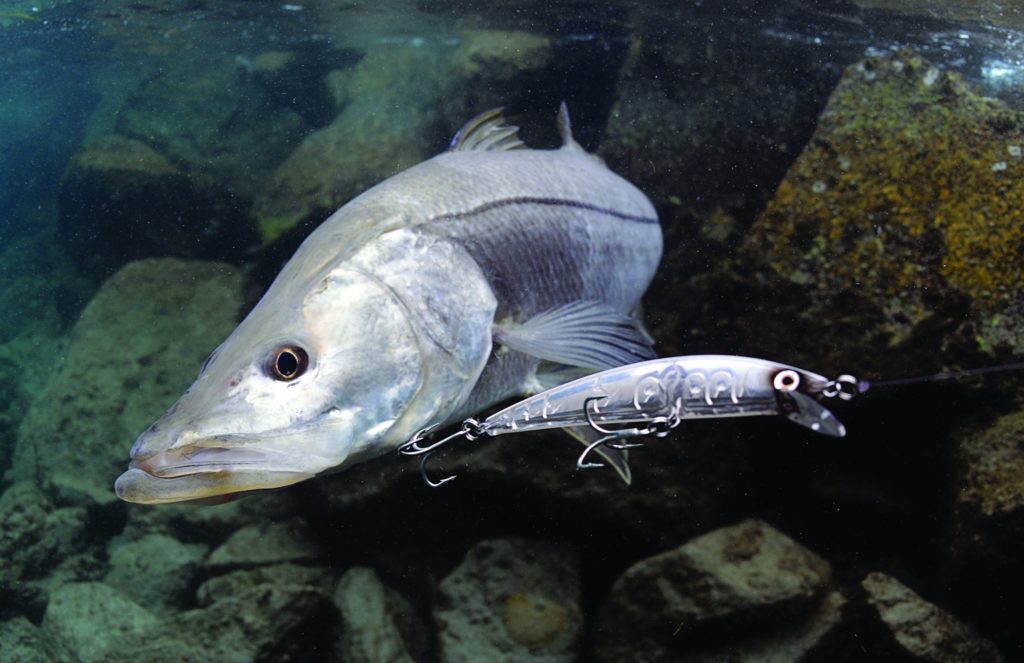
FOOLING SNOOK IN CLEAR WATER
Capt. Kevin Merritt of Naples, Florida, is a believer in twitching. He points to a trip where He “found snook off a grassy beach, stacked on an eddy, feeding on jumbo glass minnows.” His anglers could see the fish clearly, and after many casts with topwaters to no avail, some tried casting Rapala X-Raps up-current and retrieving with an erratic jerk-and-pause retrieve. “We were able to draw strikes from spooky snook in that ultra-clear water,” where nothing else seemed to work, Merritt says.
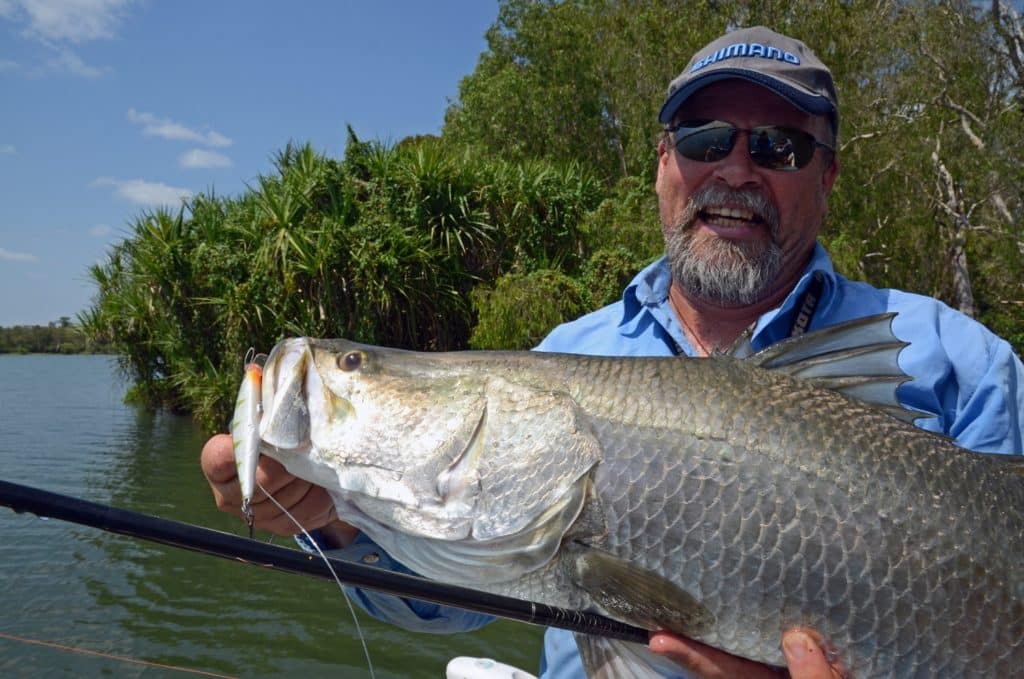
MAKE YOUR LURE FLASH, JINK, SHIMMY AND DANCE
The same sort of approach is deadly on “snook Down Under” — barramundi — says expert Steve Starling, one of Australia’s most prolific fishing writers. “Almost every memorable cast-and-retrieve session I’ve had on barramundi has involved that technique. I’ve seen it turn a shut-down bite into a frenzy more times than I can count,” he says. “Real maestros of the jerk-and-pause can keep a lure flashing, jinking, shimmying and dancing in a small area for minutes at a time. It can be a deadly strategy.”
Perhaps the best-known lure maker in the world, Patrick Sebile has fished his lures and others all over the world. “I’ve truly found that the jerk-and-pause retrieve is effective for almost every species of fish,” Sebile says. “It works in almost all circumstances.”
WHY TWITCHING IS SO EFFECTIVE
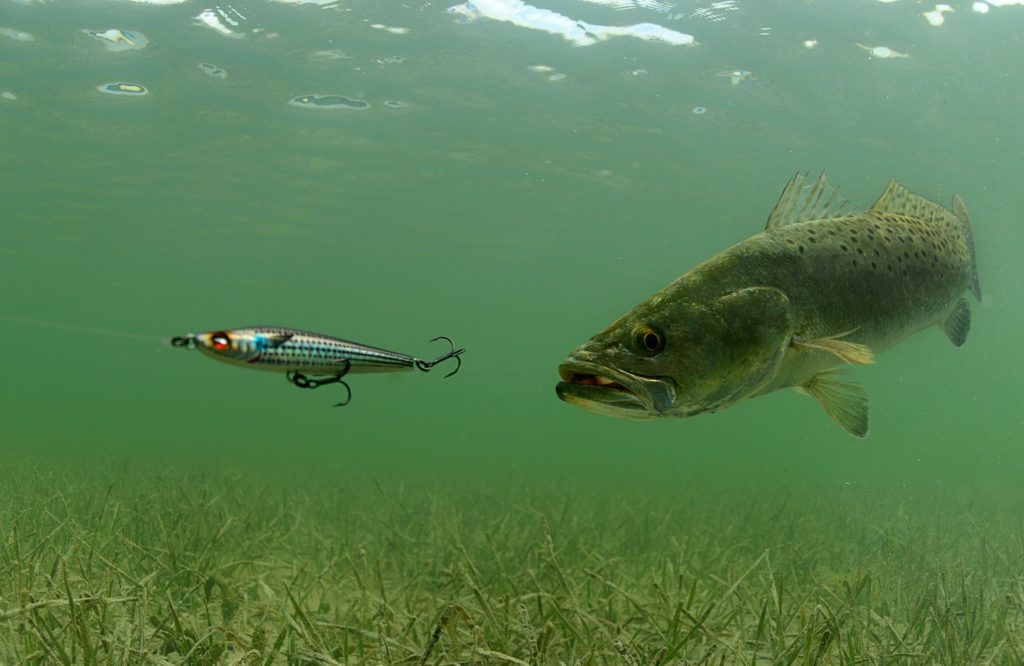
To better understand the fine points of jerk-and-pause (J&P) fishing, I solicited opinions from a variety of experts around the United States and beyond. What about this style of fishing lures, I wondered, should make it so effective?
Just think of how a wounded herring darts, stops and darts, says Ray Waldner, a professor of biology at Florida’s Palm Beach Atlantic University and a longtime Sport Fishing Fish Facts expert. “Injured baitfish swim in a very erratic manner, which attracts the attention of predators.”
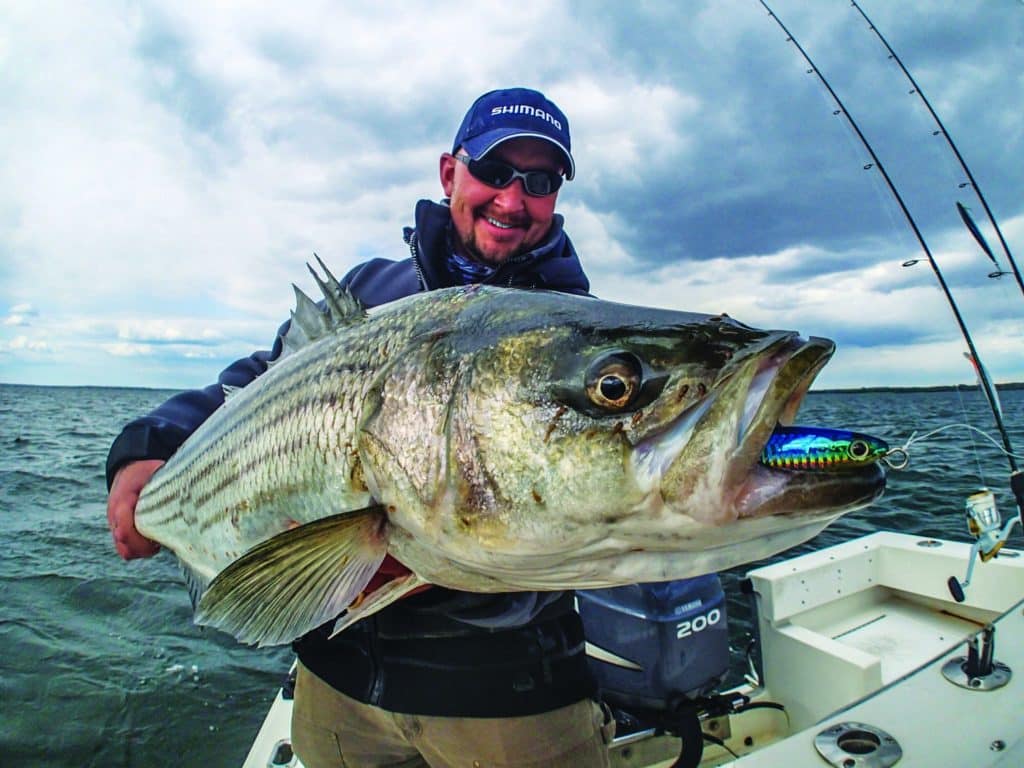
ERRATIC RETRIEVES SIGNAL AN EASY MEAL
“There’s a simple fact in nature and the world of fish survival,” says Capt. Jack Sprengel, who fishes the Northeast for stripers, weakfish and offshore game fish.”Don’t stand out and don’t fall behind! Jerkbaits capitalize on these principles, giving predators an easy choice.”
Taking a somewhat different tack, Larry Dahlberg, host of the TV show The Hunt for Big Fish, maintains that the erratic retrieve doesn’t so much mimic wounded prey as simply frantically escaping prey. “One of the key triggers, if not the key trigger, is making the lure act as though it thinks something is after it,” he says. A steady retrieve, on the other hand, doesn’t make a lure seem as if it were being chased.
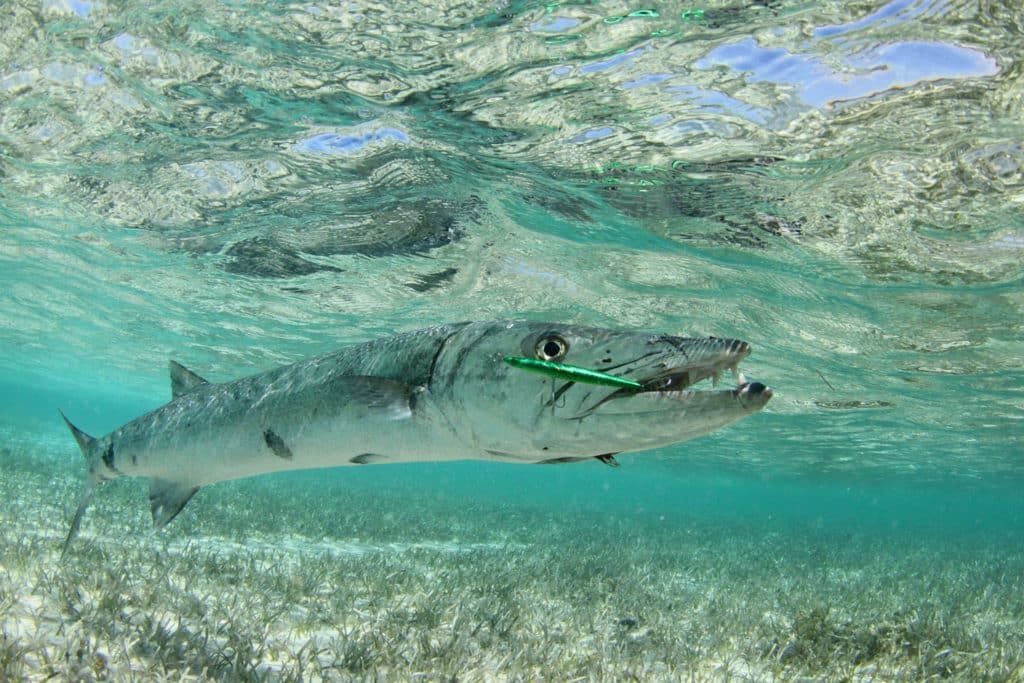
TRIGGERED: RESPONSE ATTACK
Internationally renowned lure designer Patrick Sebile believes a J&P retrieve can trigger a response in a predator not actively feeding. Besides the visual flash, the lure suggests a wounded fish — hence an easy meal. Many of these J&P pros agree with Capt. Matt Tusa, who fishes the coastal waters of western Mississippi, that ultimately this retrieve also offers the advantage of keeping the lure in the strike zone longer.
WHICH LURES TO TWITCH?
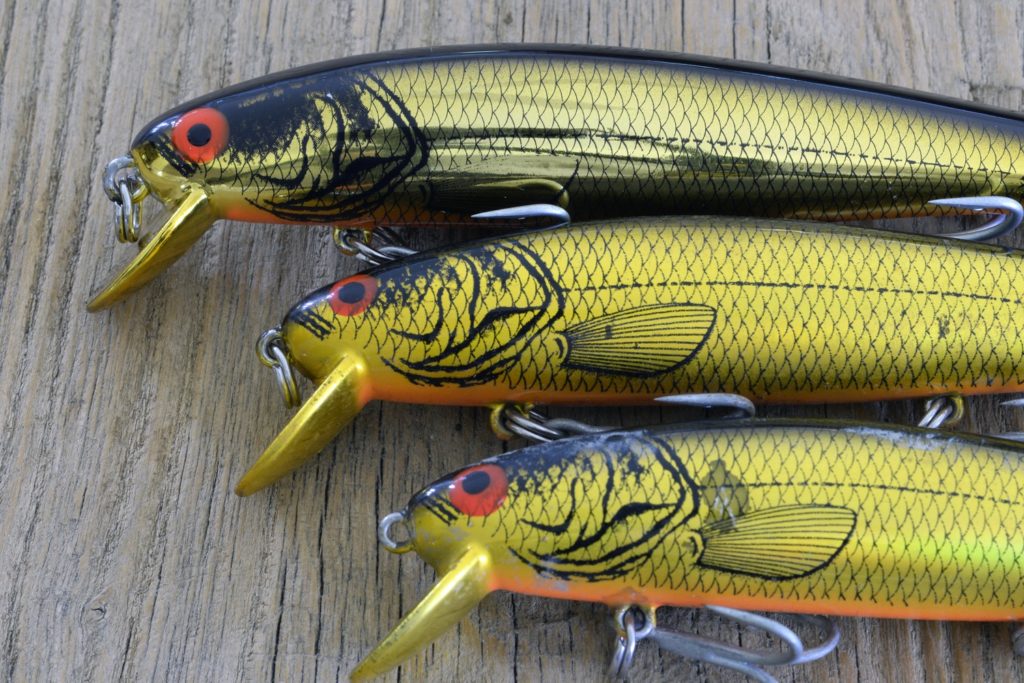
Which sort of lures will give you the best performance with a J&P retrieve?
Australian Jim Harnwell — for years, the publisher of that country’s venerable Fishing World magazine — says “most lures that feature long, slender designs and fairly small lips” that run shallow work well as twitchbaits.
His countryman, Steve Starling, agrees, and cites — as did some other pros interviewed for this feature — one lure that has for decades exemplified the jerkbait plug: the venerable Bomber Long A. One of the attributes of the Long A that Starling cites is that it floats at rest, so it ascends during pauses — which is when he looks for most strikes.
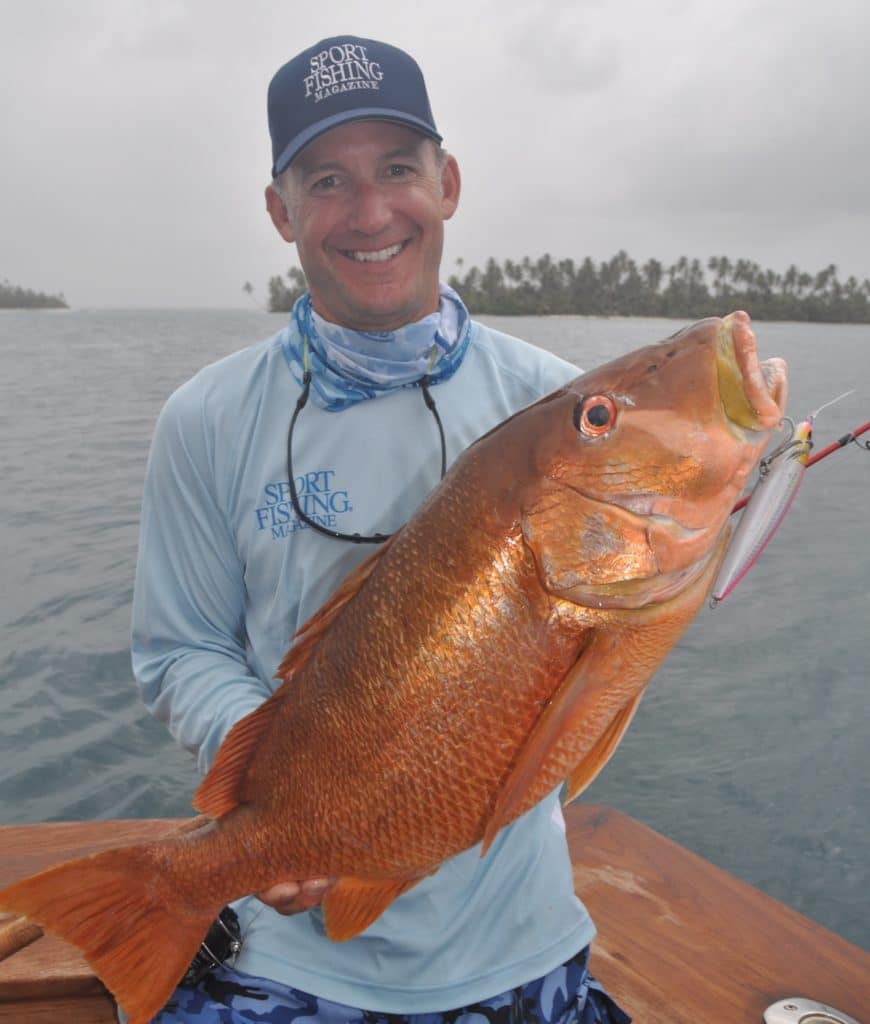
DEPTH CONTROL
Capt. Kevin Merritt likes J&P lures that suspend, as they allow an angler to better control the depth at which his lures are working — and, he says, faster sinkers are better fished in deeper water.
JERK-AND-PAUSE SUCCESS WITH ANY LURE
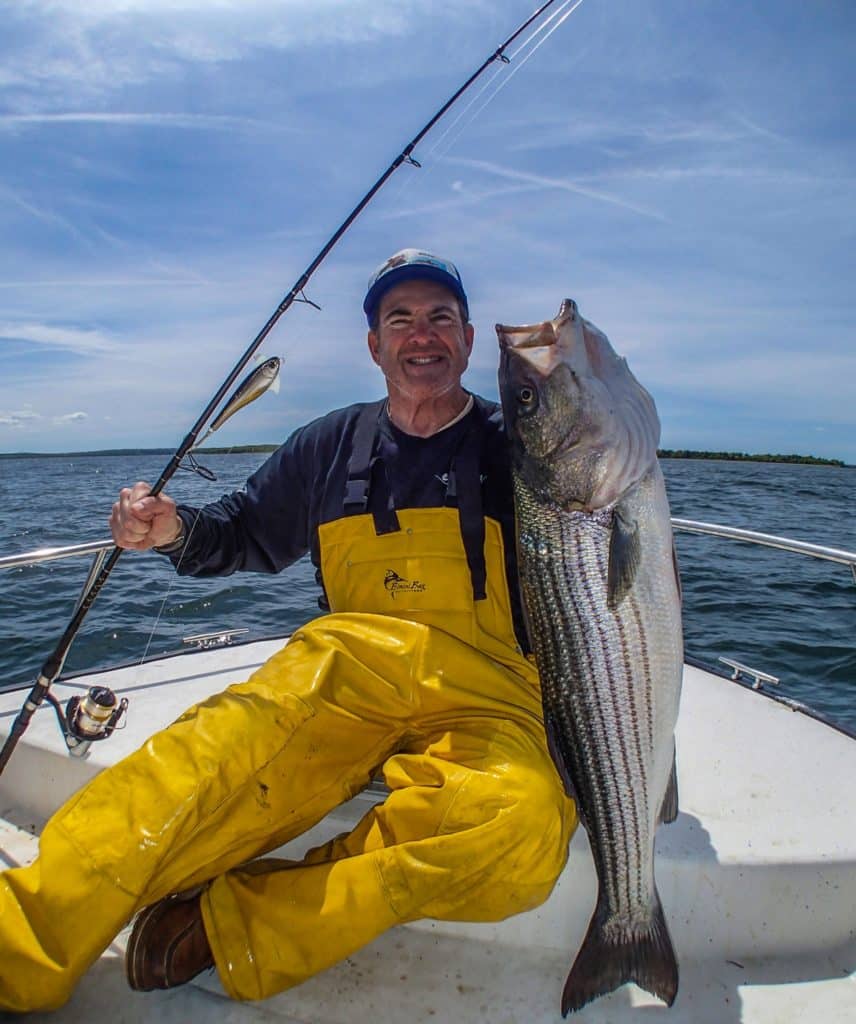
As Patrick Sebile points out, many crankbaits may have been designed without any sort of J&P retrieve in mind, yet can be superb lures for this technique.
One case in point: Shimano’s Waxwing, designed specifically for a steady retrieve. Yet Jack Sprengel says, “With the new suspending Waxwing, a single sweep of the rod followed by a pause has proven to be one of the most effective presentations I’ve ever seen.”
Whatever the lure, many J&P pros cite flashy finishes as best, since, after all, the jerky retrieve is designed to get fishes’ attention.
TWITCHING AROUND STRUCTURE
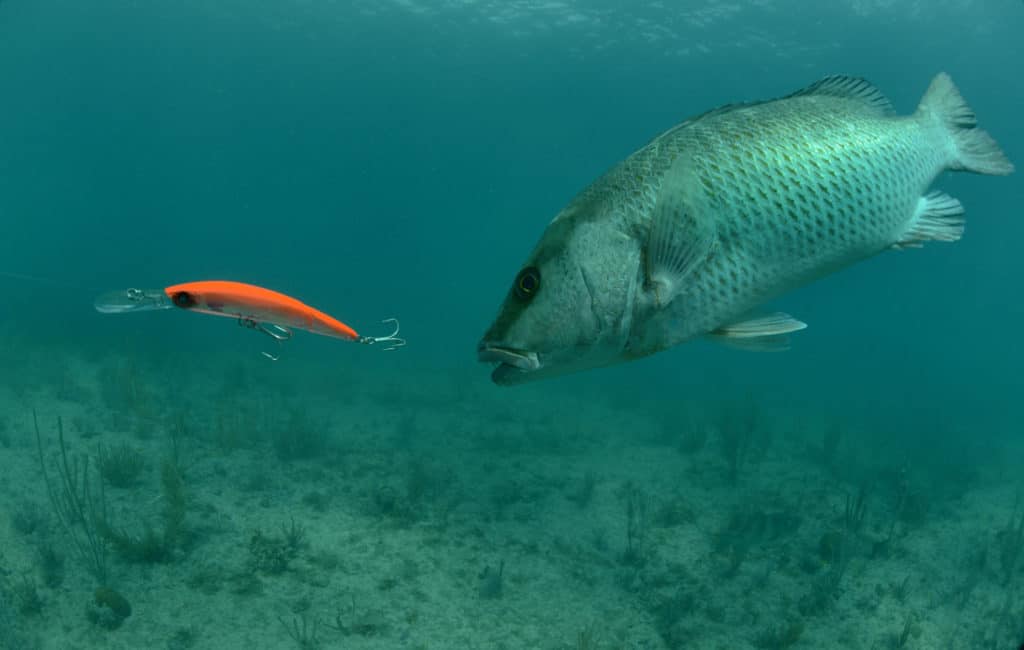
Kevin Merritt offers the example of snook in mangroves as an ideal situation for a J&P retrieve. That gives the lure more time in the critical strike zone, near the mangroves, to allow a snook to see and attack without going far from the safety of mangrove roots.
Jim Harnwell cites much the same strategy when fishing around snags in Australia, where “fish won’t move too far from cover, so the key is to keep a lure twitching and pausing but not actually moving out very far.”
Florida-based Capt. Jim Ross likes a J&P retrieve around structure such as mangroves, rock jetties and docks because “it keeps the bait in the strike zone near the structure for a long period of time,” more than would a straight retrieve.
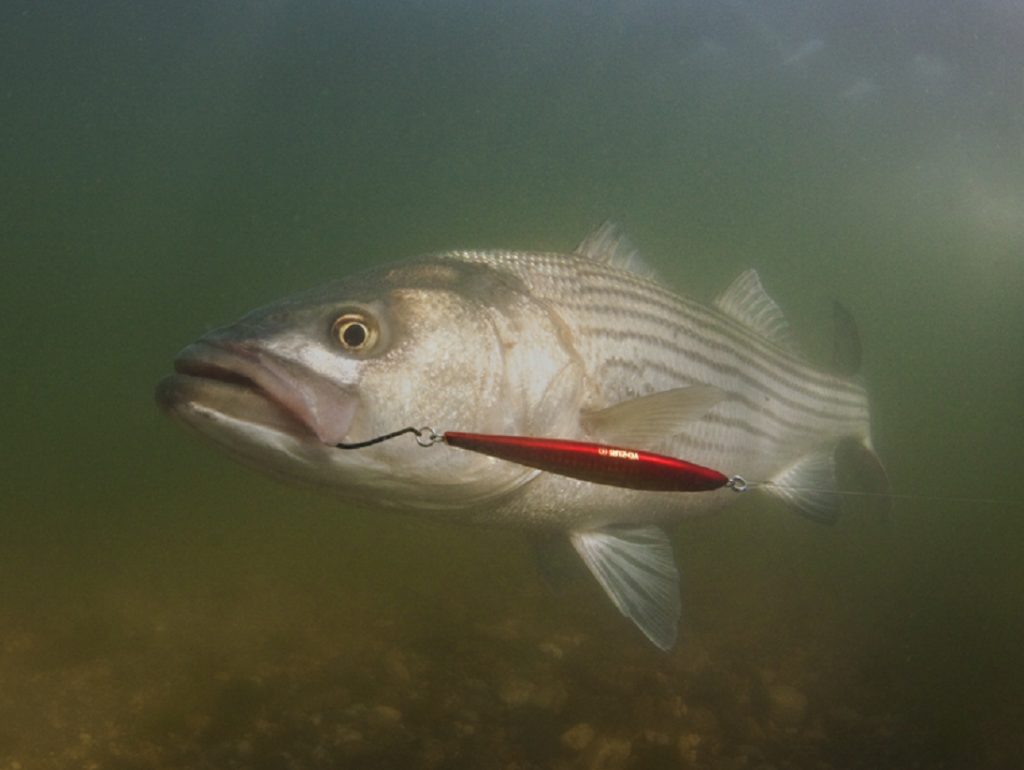
INTERESTING THE DISINTERESTED
Capt. Richie Gaines, who fishes the Chesapeake Bay, likes J&P as a go-to retrieve when casting to striped bass in water that’s clear, fairly shallow and cool. “I suspect that when the water is on the cooler side,” he says, “the stripers aren’t fired up or in the mood to aggressively chase bait. The twitch-and-pause technique is perfect for these conditions, with the flash and vibration of the twitch attracting attention, and the lure just sitting there on the pause so it looks like an easy meal.”
Farther north, New York striper guide Capt. John Luchka reiterates the theme of J&P for bass in the spring, when “they’re pretty lethargic after a long winter.” Particularly when not fished too fast, he says, “The jerk-and-pause will often trigger a reaction bite.”
THE SLOW TWITCH
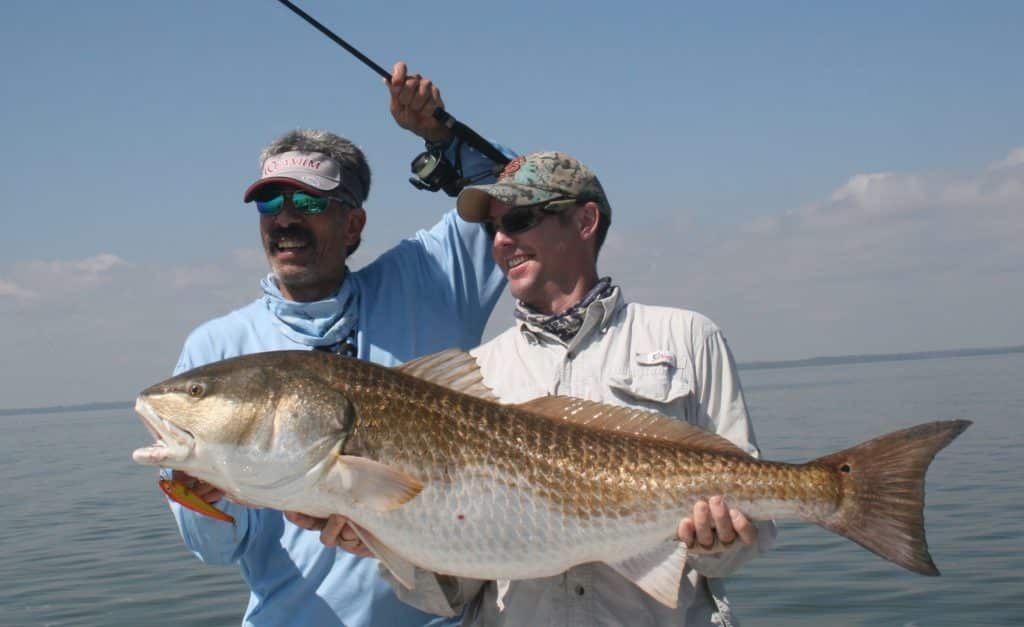
Jim Ross modifies his retrieve according to season and water temperatures in the same way most pros seem to — i.e., the warmer the water, the faster and harder the J&P, and vice versa. Tournament-winning pro Bernie Schultz, based in Florida, echoes that: “The warmer the water, the more action and pauses.” Of course, the opposite is also true, Schultz says, noting that in the Southeast, cold snaps can kill or impair smaller fish, and during such times, predators may see a slowly twitched crankbait as easy pickin’s. On the other hand, beware of pauses too long if the fish are fairly active. “That might give fish time to decide the offering just doesn’t look right,” advises fisheries biologist Ray Waldner.
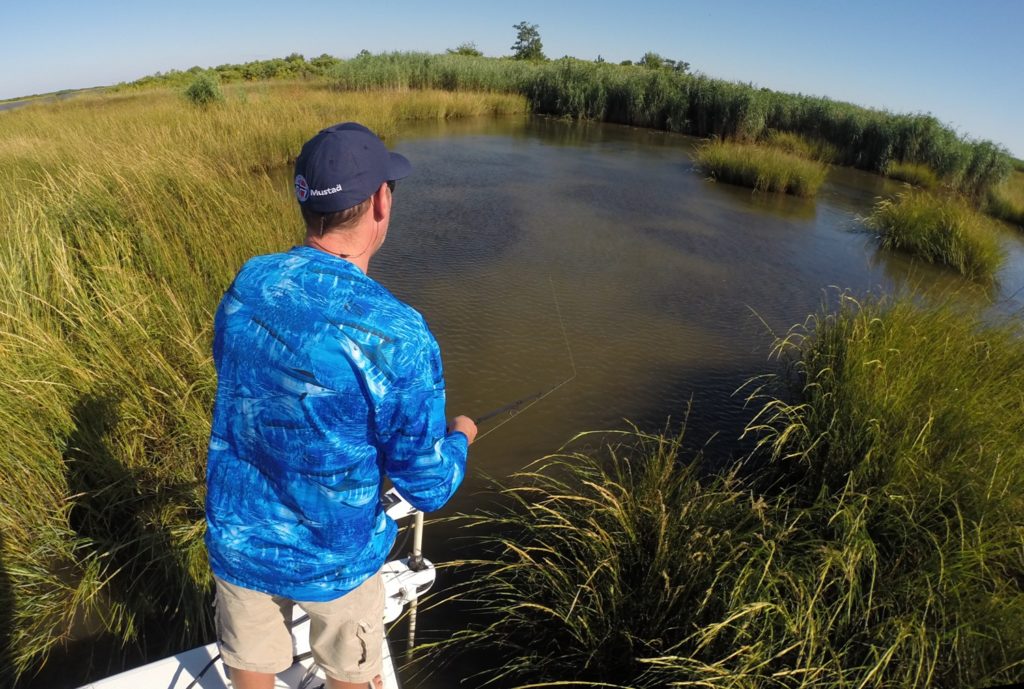
TAKING UP THE SLACK
How do J&P experts work their crankbaits back to the boat?
“It’s all about rod-tip action,” advises Steve Starling of the crucial twitch part of the retrieve.
From my own experience, I agree, but would say it’s often all about picking up the slack. That is, I find that many lures offer the most effectively erratic wobbles when, at the end of each jerk, I leave slack line on the water. Thus each twitch begins with picking up slack and whipping the lure in a quick, sharp motion.
WHEN TO TWITCH HARD, TWITCH FAST
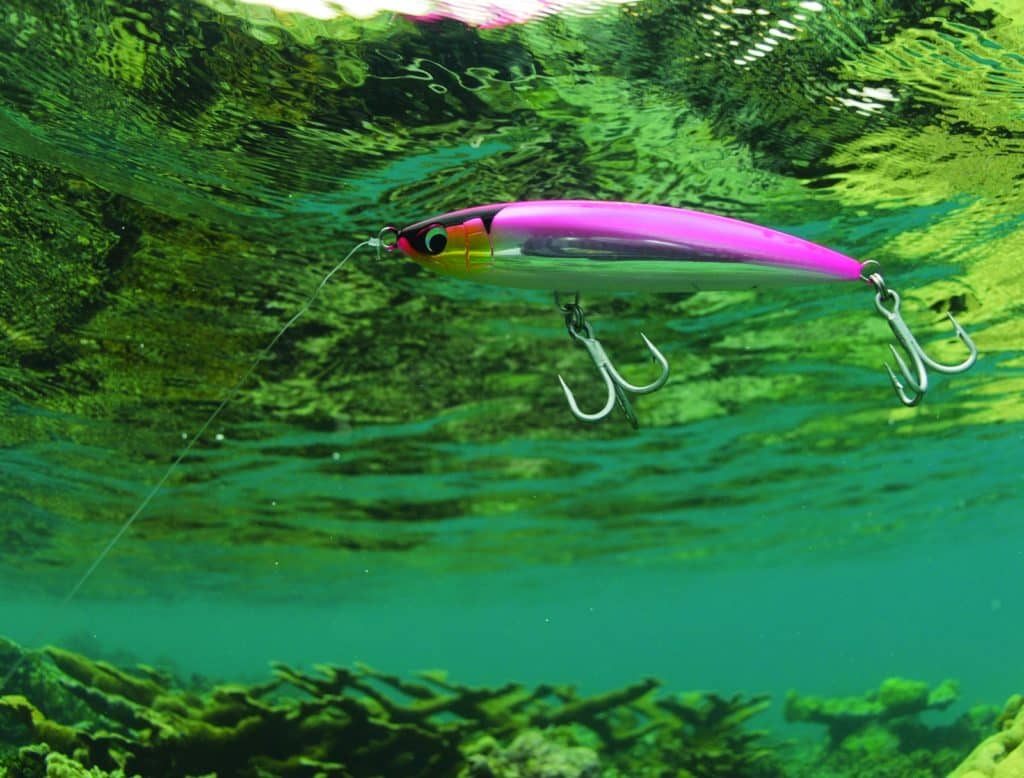
Of course, when casting to speedy, schooling species, such nuances fall by the wayside, when we’re talking about a full-on, take-no-prisoners hard jerk and quick pause. In fact, I prefer heavy, fast-sinking lures such as Shimano’s Orca Pencil, the Daiwa SP Minnow Bullet and Sebile’s Stick Shadds (no longer available in a saltwater series but, I am told a new saltwater Sebile lineup is scheduled for introduction in 2016) when using heavy gear with a hard and fast retrieve; lighter lures would end up at the surface, when more often I want to keep them several feet down.
ADVICE ON SWAPPING FISHING HOOKS
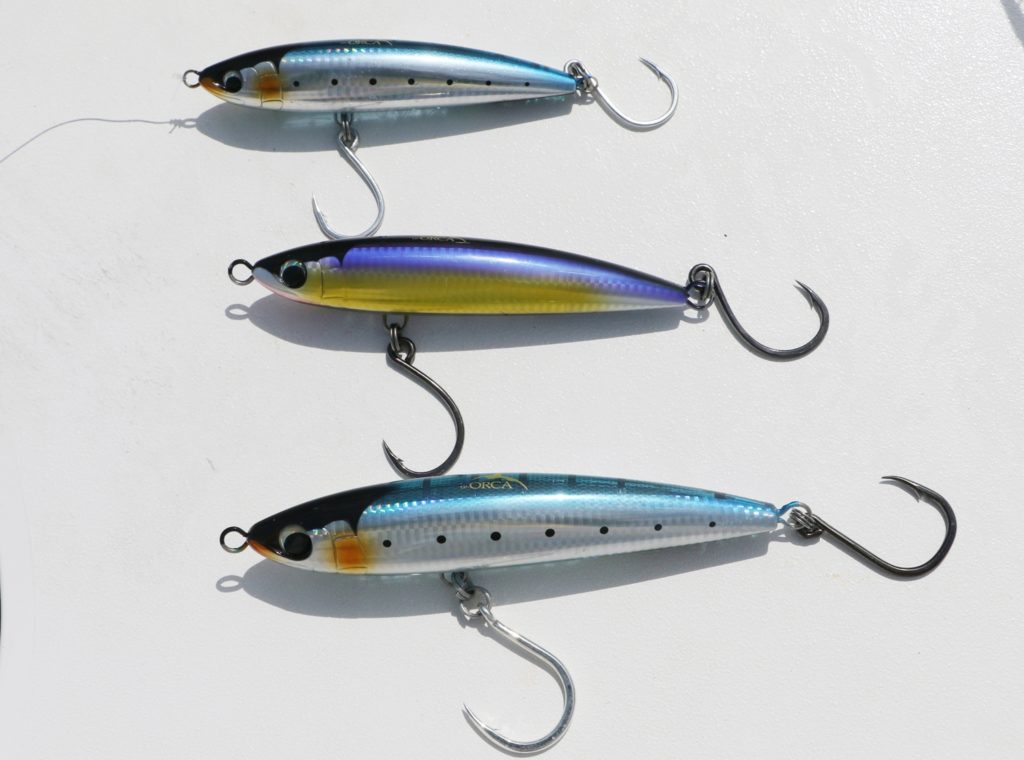
While it’s often best to swap out fishing hooks for stronger trebles or singles, in general, be cautious about hooks that are larger or much heavier than those provided, as the lure’s action could suffer.
On the other hand, some pros, like Halco’s Tim Carter, a Perth, Australia, native, actually want heavier hooks at times to make a buoyant lure suspend or a suspending lure sink. Carter says he typically prefers a lure that ascends and wobbles a bit during the pause, but if casting to fish holding deep near structure, a lure that sinks on the pause may offer the best results.
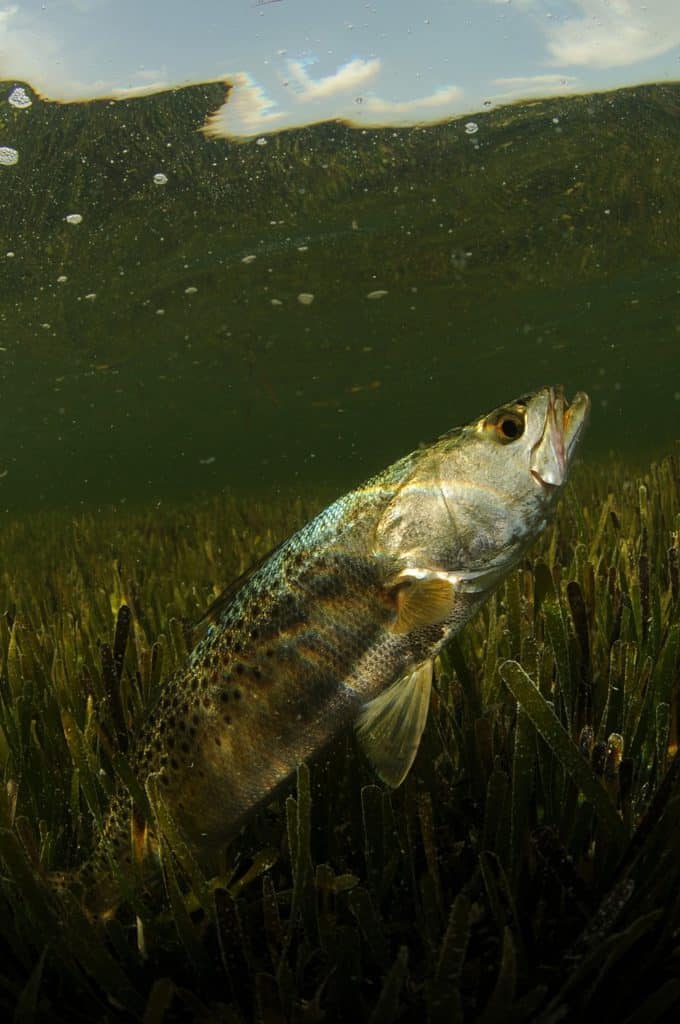
TOP TWITCH
There are times when twitching hard lures on top can be dynamite, Larry Dahlberg says: “I work my minnow lures erratically all the time, but with floating minnows I like to give them a couple of snaps to ‘woof’ the surface and make bubbles and commotion at the beginning of the retrieve.” Sometimes, he adds, he might stop partway through the retrieve to do it again.
“We’ve all had fish following a lure, then slow down and leave. As all experienced anglers know, the best way to get a fish to commit is to try and take the lure away by speeding up or changing direction,” Dahlberg says.
TAILOR YOUR TWITCH TO YOUR TARGET
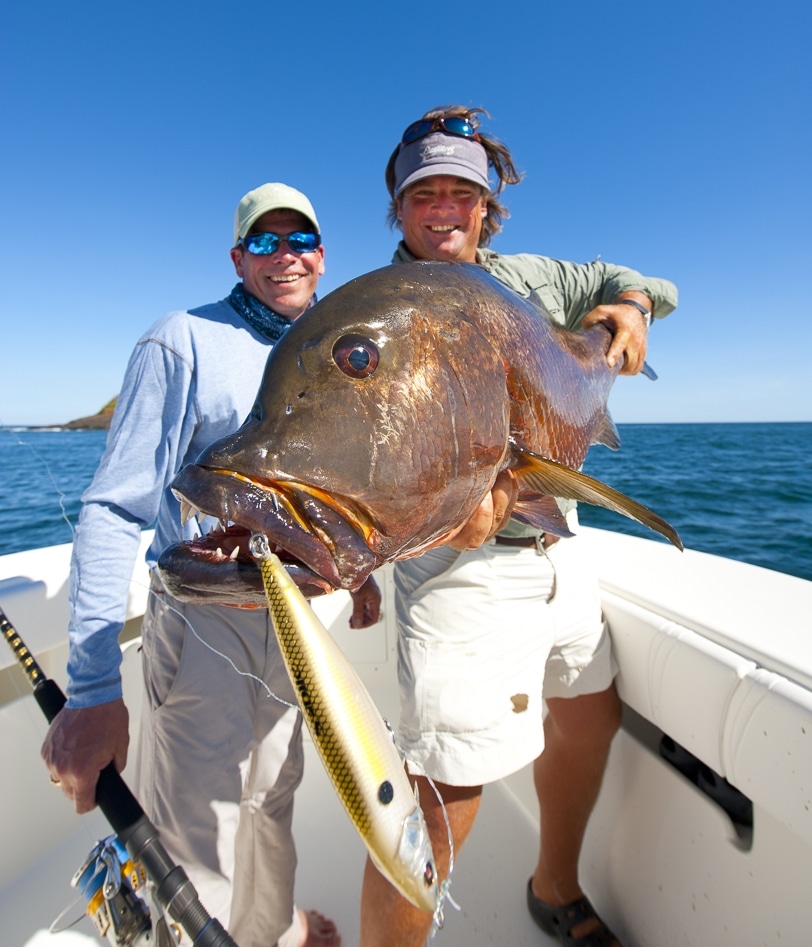
Patrick Sebile adjusts his J&P retrieve based on the behavior of his target species. If they’re not actively feeding, “I’ll go slow, with soft twitches and long pauses.” When predators are feeding actively, Sebile speeds up his retrieve with quicker, harder twitches. Sometimes he’ll combine his approach when fishing a Stick Shadd, with fast, hard jerks but long pauses between.
John Luchka points out that when casting to schools of baitfish, one should throw just to the edge, where the J&P retrieve will suggest a wounded fish (again, that easy meal).
Finally, take a moment to watch a lure near the boat and how it’s working when you twitch it. Larry Dahlberg says, “When checking out a new lure [using it for the first time], I always put it through its paces by checking both the slowest and fastest retrieve it will operate, and what it does when I give it a short slack-snap-slack jerk. In clear water, the lure will tell you what to do.”
PAY ATTENTION TO HOW YOUR FISHING LINE LAYS
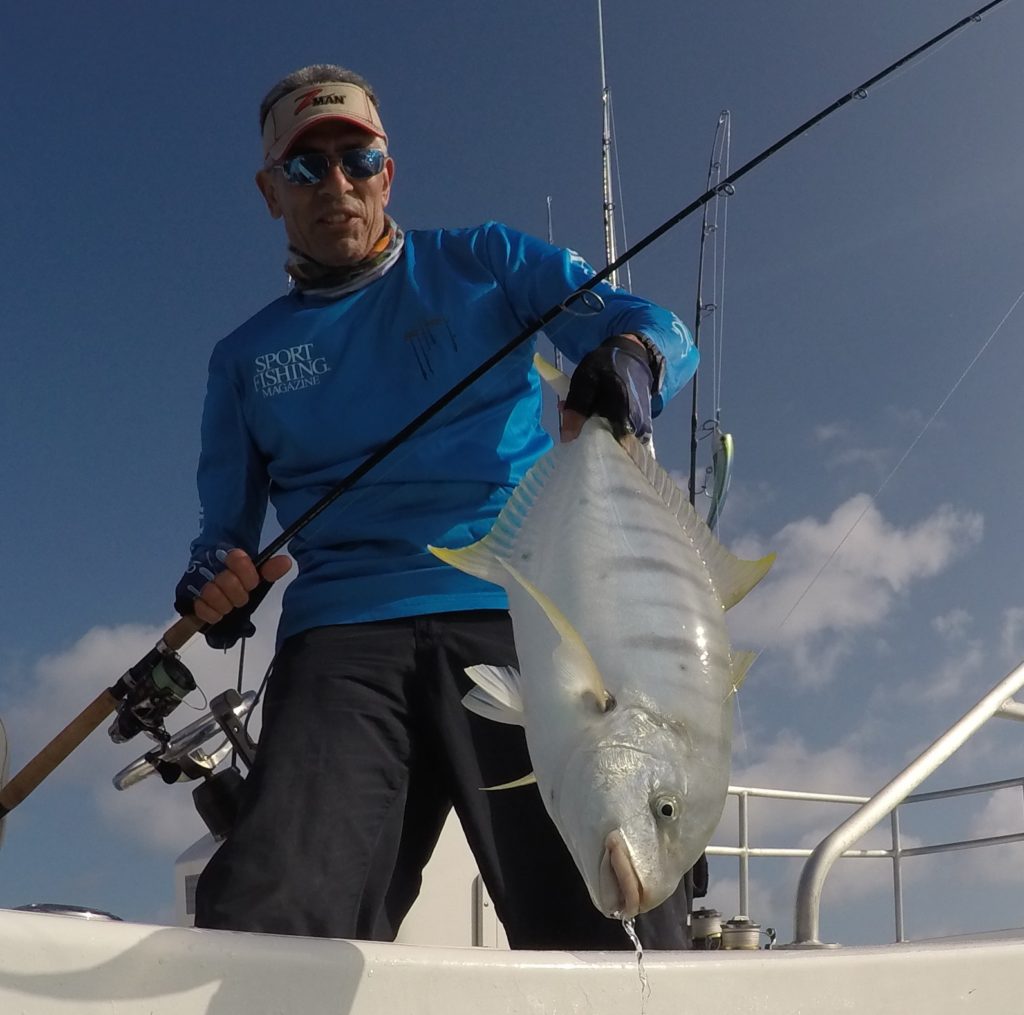
If you throw really light lures with thin braided lines, and then work them back with a jerk-and-pause retrieve, you’re likely to often hear one of fishing’s most dreaded sounds on your next cast: the chaotic tangle of a wind knot whacking out the guides.
The pause in your retrieve allows for loose loops around a spool that, on the next cast, turn into monsters.
J&P fishing is particularly productive, but demands constant vigilance, and often that isn’t enough. I’ve concluded that one’s spinning reel plays a huge part in this problem. I realized that when I started fishing Shimano’s Stradic CI4+ in a 2500 model, filled (all the way) with 12-pound braid. I almost couldn’t buy a wind knot. In many months of fishing that reel with very light lures and J&P retrieves that entail lots of slack line each jerk, I’ve got very, very few wind knots. Why? Somehow, clearly, in the reel’s design and operation, it picks up line and lays it in coils tight enough that no loose loops make much mischief on the next throw. I caught this tough golden trevally fishing a very light plastic tail with slack-line-pick-up twitches that invite wind knots, but not a one came out of the Stradic shown.
This isn’t an ad for Shimano, and I don’t doubt there are brands of other small spinning reels that will do the job — but in truth, most that I have used don’t. Unfortunately, there’s no way to know how well a reel will lay down line except through trial and (d’oh!) error.




